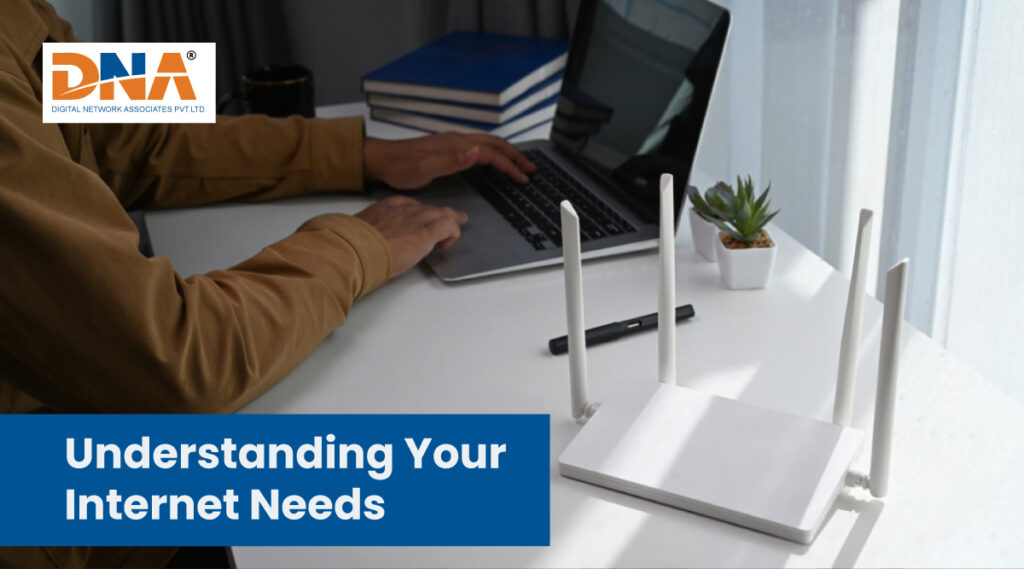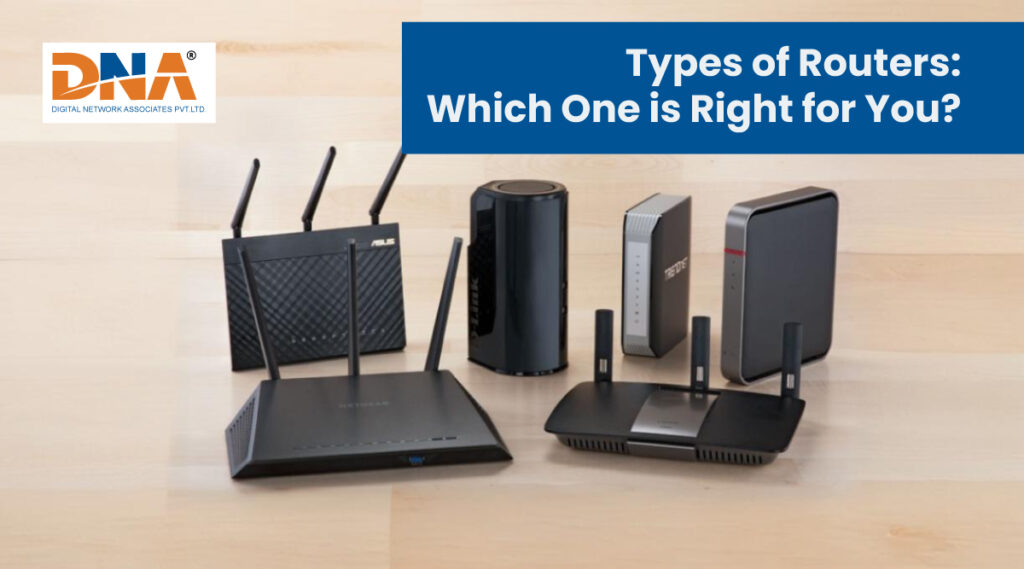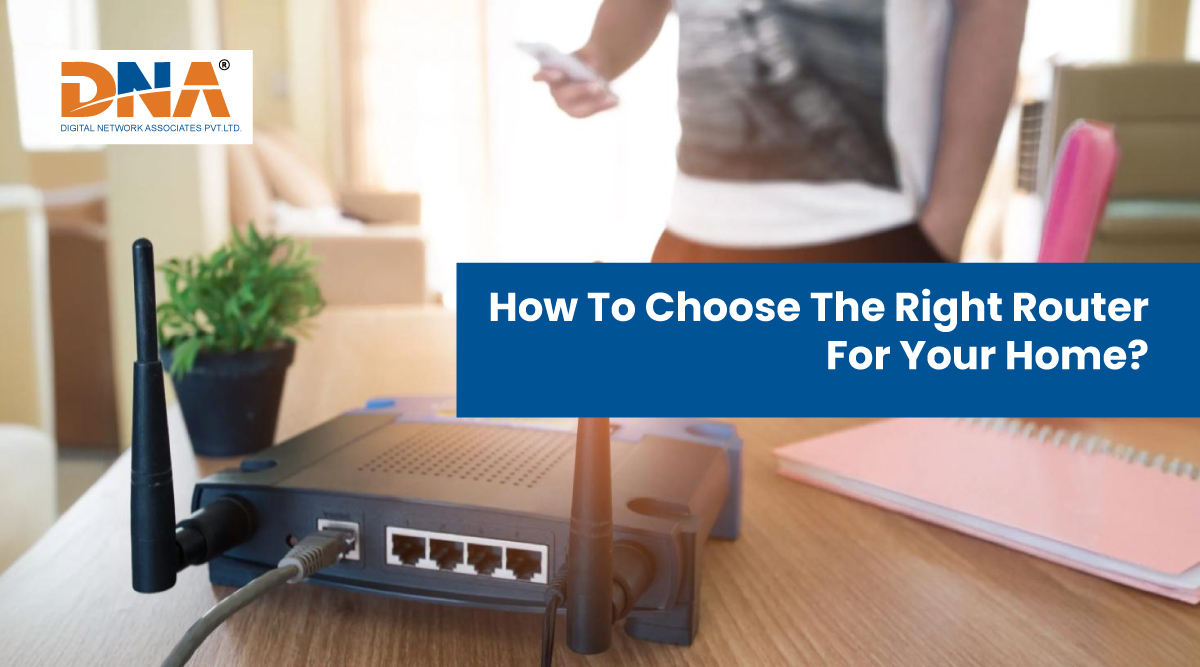How to Choose the Right Router for Your Home?
In the present times, choosing a suitable router is essential for a reliable internet connection. But, with many options in the market, it can be a bit overwhelming on how to start. Selecting a suitable router can also make a lot of difference regardless of the online activity. So, continue reading ahead to know about some factors while choosing the best home router. This article also covers more about the types of routers available in the market.
Understanding Your Internet Needs

Before you choose a router, it’s important to understand your internet needs. This will ensure you choose a suitable router. Initially, you have to consider factors like the size of the space. The number of devices to link should also be factored in. Moreover, you must be sure about the activities that you’ll be doing online. If you’re going to stream videos, then you will need a router with better coverage. On the other hand, you must think about future needs. To accommodate more devices, you may have to upgrade to a more powerful router.
Types of Routers: Which One is Right for You?

When you’re about to choose a home WiFi router, you have to consider the various types. Let’s now quickly go through the types ahead.
Single-Band Routers
These are basic routers that operate on one frequency band. Usually, the routers operate on a 2.4 GHz frequency. They are also ideal for browsing the internet and checking emails. You can opt for such routers when there’s less space. However, these are not suitable for gaming or HD streaming.
Dual-Band Routers
These routers function on 2.4 GHz and 5 GHz frequencies. These also offer more flexibility and better performance when the network is busy. They also function well when you need high internet speed for gaming and streaming.
Tri-Band Routers
Tri-band routers offer incredible performance with three bands. These include 2.4 GHz and two 5 GHz bands. Most of the time, you will come across such routers in large houses. Moreover, they help reduce congestion and ensure better connectivity for high-bandwidth activities.
VPN Routers
When you’re seeking a secure internet connection, then you must consider a VPN router. As different devices are connected to the router, privacy and security are protected. However, it may not be easy to set up a VPN router.
Virtual Routers
As soon as you start using a virtual router, it will run on a virtualized server. Besides, multiple devices can run on a shared internet connection with this router.
Must-Have Features for Home WiFi Routers
Many router features have to be considered before a selection. Let’s now check the features ahead.
Speed & Performance
As you seek a router, ensure that it supports the latest Wi-Fi standards. A router with a high-speed rating can also improve the internet browsing experience. You will also not encounter lags while playing online games.
Coverage Area
Before you make a purchase, check the size of the house or the office. Usually, routers with larger coverage areas are suitable for larger spaces. This ensures internet stability across the entire property.
Security Features
Security is always essential to protect personal information. So, when you’re searching for a router, ensure that it offers WPA3 encryption. Additionally, the router must also offer support for VPN connections. For additional privacy, the router must also have features like parental controls.
Device Compatibility
Before you buy anything, ensure that the router is compatible with frequently used devices. Some routers also support technologies like MU-MIMO to handle many devices. The internet connection will not slow down once you start using the router.
Ease of Setup
While choosing the best home router, don’t forget to check the setup process. Some routers also have easy-to-use management features. These can enable you to monitor network activity and adjust the settings.
Bandwidth & Multi-Device Support
If you have multiple devices, then choose a router with high bandwidth. It must also offer support for multiple simultaneous connections. In case you choose a dual-band or a tri-band router, then it can help manage heavy traffic.
Tips for Setting Up Your Router for Optimal Performance
Once you have purchased a router, you have to set up the router properly. Let’s now check some tips that will ensure optimal performance. You can also refer to the router buying guide for connectivity options.
- While placing the router, you have to ensure that the location offers even coverage. In case you place it near thick walls, then it can block the signal. The performance will also get reduced when the router is close to thick walls.
- For a secure network, you must also update the router’s firmware. Such updates often include bug fixes, and enhancements. These help in improving the network’s stability.
- If you’re concerned about unauthorized access, then ensure a strong encryption. Besides, you must also change the default username and password. This will prevent hackers from gaining control of the home WiFi router.
- Now, you need to check the router’s wireless settings. At those instances, you have to select an optimal frequency band depending on your needs. In case you need faster speed, then choose a router operating on the 5 GHz band,
- A bit later, you have to set a strong Wi-Fi password. While setting up the password, you must use letters and symbols. Once the password is difficult to guess, it will be tough for users to access the network.
- In addition to the above tips, you must enable QoS settings. These can prioritize bandwidth for gaming or streaming. You will also experience less lags and a smoother experience. There will not be any disruption even when the internet is heavily used.
- Now, to avoid access to the main network, you have to set up a guest network. This will add more security by isolating the personal network from the rest.
Towards the end, you have to keep an eye on the devices that are connected. If the router is running on a 2.4 GHz band, then switch to a less congested channel. You will then perceive an improvement in the signal strength.
Troubleshooting Common WiFi Issues
Now, let’s check how you can troubleshoot common Wi-Fi issues.
- When you wish to resolve Wi-Fi issues, think about restarting the router. After unplugging and plugging the router back again, you must refresh the connection. This step will help to resolve temporary problems like slow speeds.
- If issues persist after restarting the home WiFi router, then contact the internet service provider. Beyond this point, you must also look for outages. Once you connect with the ISP, confirm whether there’s no disruption in service.
- In case there are many devices, then the internet connection will drop. Hence, you must disconnect the devices which you’re not using. If possible, you must also prioritize important devices using the QoS settings.
- If there are obstructions between the device and the router, then the signals will be weak. So, you must consider keeping the router at a different position. Ideally, a central location can help improve signal strength.
Eventually, you must update the firmware of the router for home use. This step will ensure that the router is running on the latest software. If everything else fails, then you must reset the router to the original settings.
Final Thoughts: Ensuring a Seamless Home Internet Experience
Finally, you must ensure a seamless home internet experience. After you place the router at a central location, consider minimizing the interference. If there are many devices inside the house, then upgrade to a mesh system. You can also choose a router with more bandwidth in case of frequent use of the internet.
If you’re seeking a steady internet connection, then why not connect with DNA Broadband? While you tell us more about your internet needs, you can choose from a range of internet plans. For resolving technical issues, you can consider contacting our customer support team.

